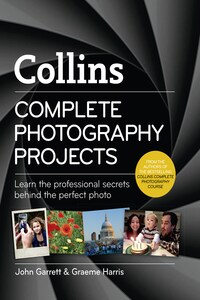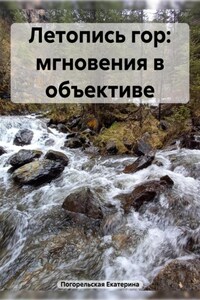I dedicate my part of this book to my Laurence and thank her for all the support and inspiration. She was with me when I made many of the pictures. She was my muse.
John
I dedicate the book to my wife Margaret for being a long-time helpful companion. She is the main inspiration for most of my photo projects – without her I would be wanting.
Graeme
In our first book together, Collins Complete Photography Course, we tackled the complexities of modern digital and film cameras, taking an in-depth look at their controls and the techniques needed in order to start producing great pictures. The next logical step, it seemed to us, was to apply the knowledge learned in the first book to the great themes of photography in this second book.
While it would benefit you to study our earlier book if you’re a novice, Complete Photography Projects stands alone, with a concise technical section to bring you up to speed. For those of you still using film, this book is equally valid, showing you how to deal with the many subjects you may want to shoot. Each chapter is devoted to a different genre, with most of the photographs shot especially for the book.
The book is written with a view to the facts of real life. We know that you may have to pack much of your photography into the odd weekend and annual holiday. We have travelled the world with small children and know how frustrating it can be to miss a great shot because the kids are hungry or tired, but we are also grateful that we did have that wonderful photographic subject on hand – the children. Finding ourselves in the right place at the wrong time has always been a dilemma too, perhaps bedevilled by awful weather or scaffolding on the great cathedral we’d been waiting a long time to shoot, and so on. We could probably make a list of problems that would fill a page.
However, our aim is to help you to turn those negatives into positives. The first section of the book will help you get to grips with that amazingly sophisticated machine that you bought. It’s basically a computer, so anyone familiar with those will not have much of a problem navigating around its menus. The job of this section is to make you become master of your machine rather than, as is often the case, the camera intimidating the photographer and blocking the creative process. This book is not for equipment geeks, but we must all get to know our cameras so well that we can just concentrate on the subject rather than struggling with our equipment. We discuss technique as related to creativity, for there is not a single technical decision that is not in fact a creative one.
When one starts out in photography the problem is not just how to take pictures, but what pictures to take. This issue delays the learning process for many novices, because to progress you need to shoot, shoot, shoot. We offer lots of themes to help you find inspiration and our photographs will show the process involved in the making of an image. So, with your new-found confidence, we hope you’ll soon be raring to get up and go under your own steam.
GABRIELLA
You don’t need a lot of equipment to take a professional-looking shot. I just used the available back light and a gold reflector to create this publicity portrait of singer Gabriella Cilmi. 1/1000 second at f5.6, 150mm, 200 ISO. JG
LOBSTER
I found this lobster outside a restaurant in Copenhagen, where the bright overcast light really made the red zing out against the cool blue ice. I stopped the aperture down to f11 to make sure the lobster was sharp from front to back and placed him right in the centre of the viewfinder to make a symmetrical composition. 1/125 second at f11, 30mm, 400 ISO. JG
Whether your camera is old or new, you will only take really good photographs if you know how to create strong images – the saying ‘cameras don’t take photographs, photographers do’ is right. You should certainly not get hung up on needing the latest camera on the market, especially in these digital days, when there will be an even newer one out next week.
We feel that the push for more megapixels and ever-bigger sensors is largely driven by the industry’s need to sell us more gear. All this technology is not going to make your pictures any more creative; many of our favourite pictures – those that inspired us to take up photography ourselves – were made on far less sophisticated cameras than even the average point and shoot camera that you can buy today. To quote the American photographer Chase Jarvis, ‘The best camera is the one you have with you.’
You will no doubt have read through your camera manual; if you had trouble understanding it, this chapter will help to make it clearer. If you still feel in need of more detail, you will find it in our first book,








